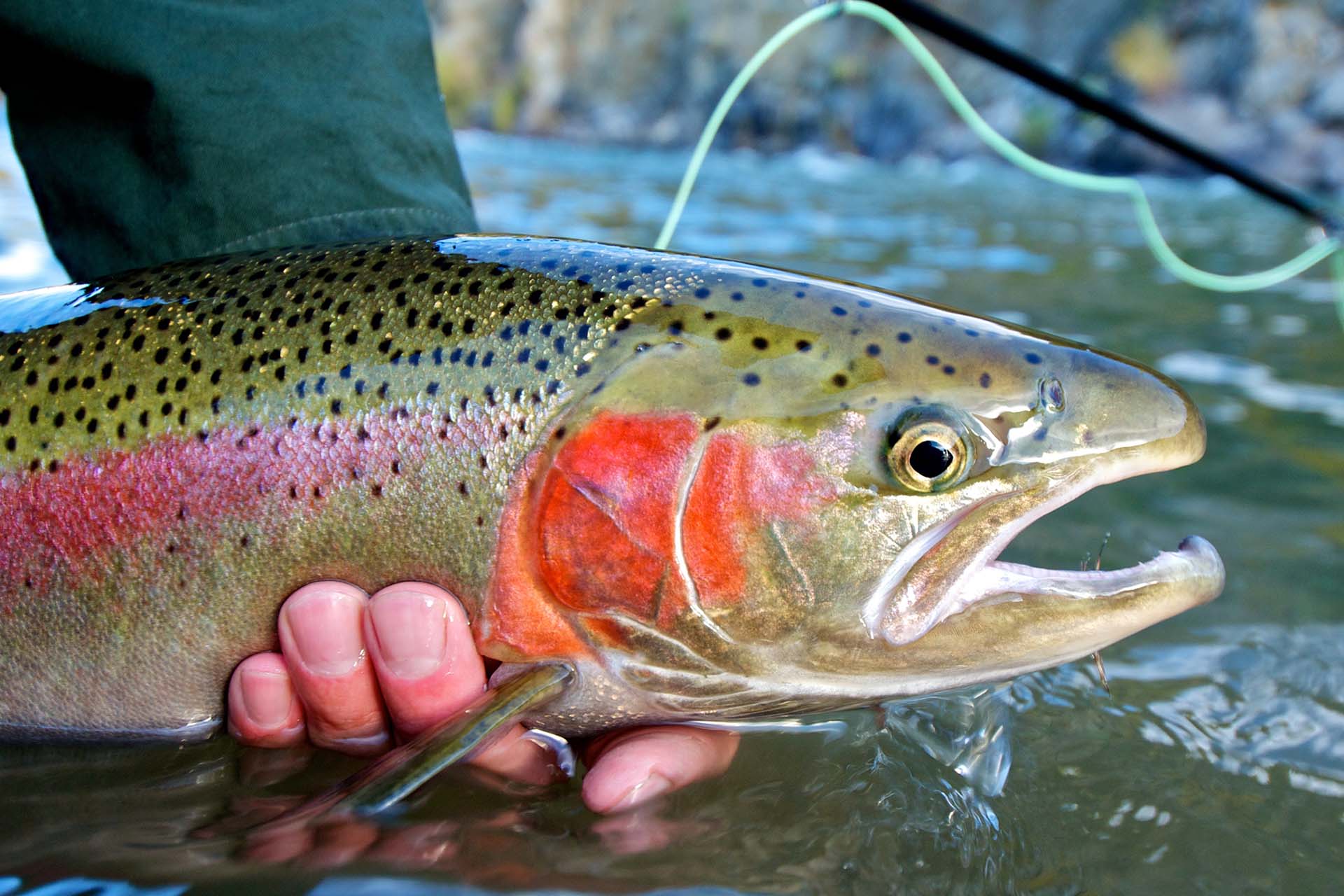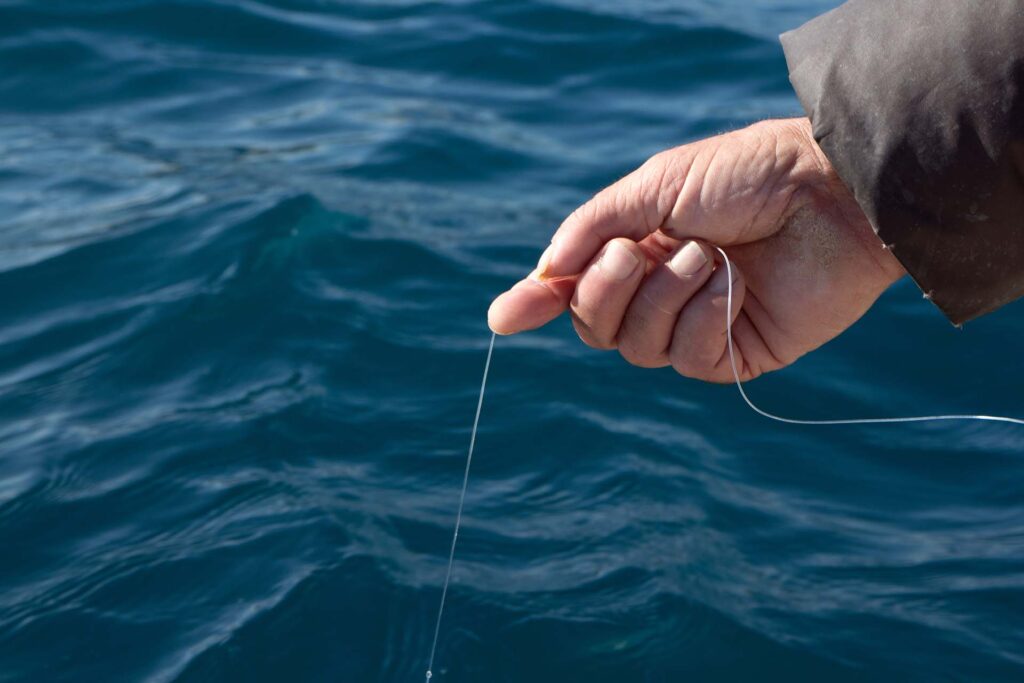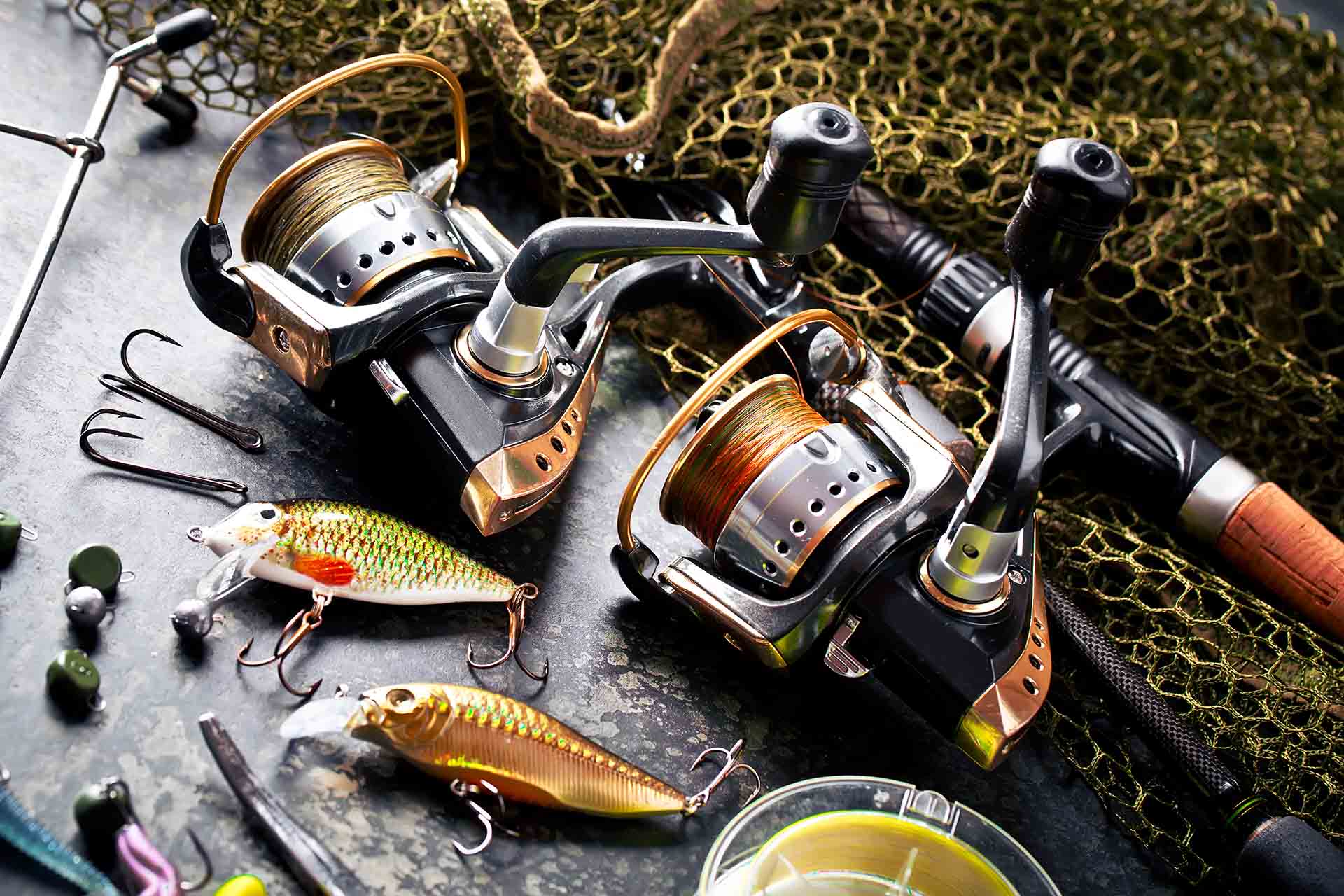As the sun bathes the ocean in golden light, a mysterious silhouette glides through the water. The question echoing in the minds of marine enthusiasts and casual observers alike is simple yet intriguing: Is a stingray a fish? This inquiry propels us into the submerged realm where biology and fascination converge. Join us on a journey to unravel the layers of marine biology, deciphering the enigma of whether a stingray truly belongs among the finned inhabitants of the ocean.
Is a Stingray a Fish?
Yes, a stingray is indeed a fish. With its cartilaginous skeleton, gills, and fins, the stingray fits the criteria that categorize it within the diverse and fascinating world of aquatic finned creatures.
Numerous stingrays exhibit a solitary lifestyle, coming together solely for breeding and migration. Among sizable species like manta rays and cow nose rays, perpetual movement characterizes their existence, as they embark on migrations in the thousands to feeding grounds annually. These extensive congregations, comprising up to 10,000 individuals, are commonly referred to as a “fever.”

What Type of Fish Is a Stingray – Understand These Underwater Species
Picture the ocean floor, a realm where the sandy landscape gives way to the glide of stingrays. These remarkable creatures come in a variety of shapes and sizes, showcasing a fascinating tapestry of marine life. From the sleek elegance of the eagle ray’s diamond-shaped disc to the more common round appearance of the southern stingray, each type brings its unique charm to the underwater ballet. Some stingrays measure just a foot across, while others, like the majestic manta ray, can stretch up to an impressive 23 feet.
Their skin, smooth and often adorned with dots or patterns for camouflage, conceals a remarkable cartilaginous skeleton beneath. But is a stingray a freshwater fish? Those dwelling in freshwater environments are found within the Amazon River system, and they stand out as one of the rare ray species that prefer freshwater habitats rather than saltwater.
Stingray Habitat and Distribution – Where These Fish Species Are Commonly Found
Stingrays, like nomads of the ocean depths, carve their presence across a diverse range of habitats. From tropical coral reefs to the sandy expanses of the ocean floor, these fascinating creatures exhibit impressive adaptability. Some species favor the shallows, where the sunlight penetrates the water, revealing the vibrant hues of coral reefs and seagrass beds.
In contrast, others gracefully navigate the deeper abysses, adding mystery to the vastness of the open sea. The global distribution of stingrays spans across both temperate and tropical waters, showcasing their ability to thrive in a multitude of climates. Whether concealed in the warm embrace of coastal lagoons or venturing into the cooler currents, stingrays enrich the marine tapestry with their presence, leaving an indelible mark on the diverse ecosystems they call home.
Biological Fish Classification of Stingrays
In the intricate web of the animal kingdom, stingrays find their place as captivating members of the Chondrichthyes class. Classified alongside sharks and skates, these cartilaginous fish share a common ancestry that dates back millions of years.
Within this lineage, stingrays carve out their unique identity, characterized by key features that firmly place them among the finned denizens of the deep. The presence of gills, essential for extracting oxygen from water, marks a defining trait, while their pectoral fins, expansive and wing-like, facilitate the graceful movements that define their underwater ballet.
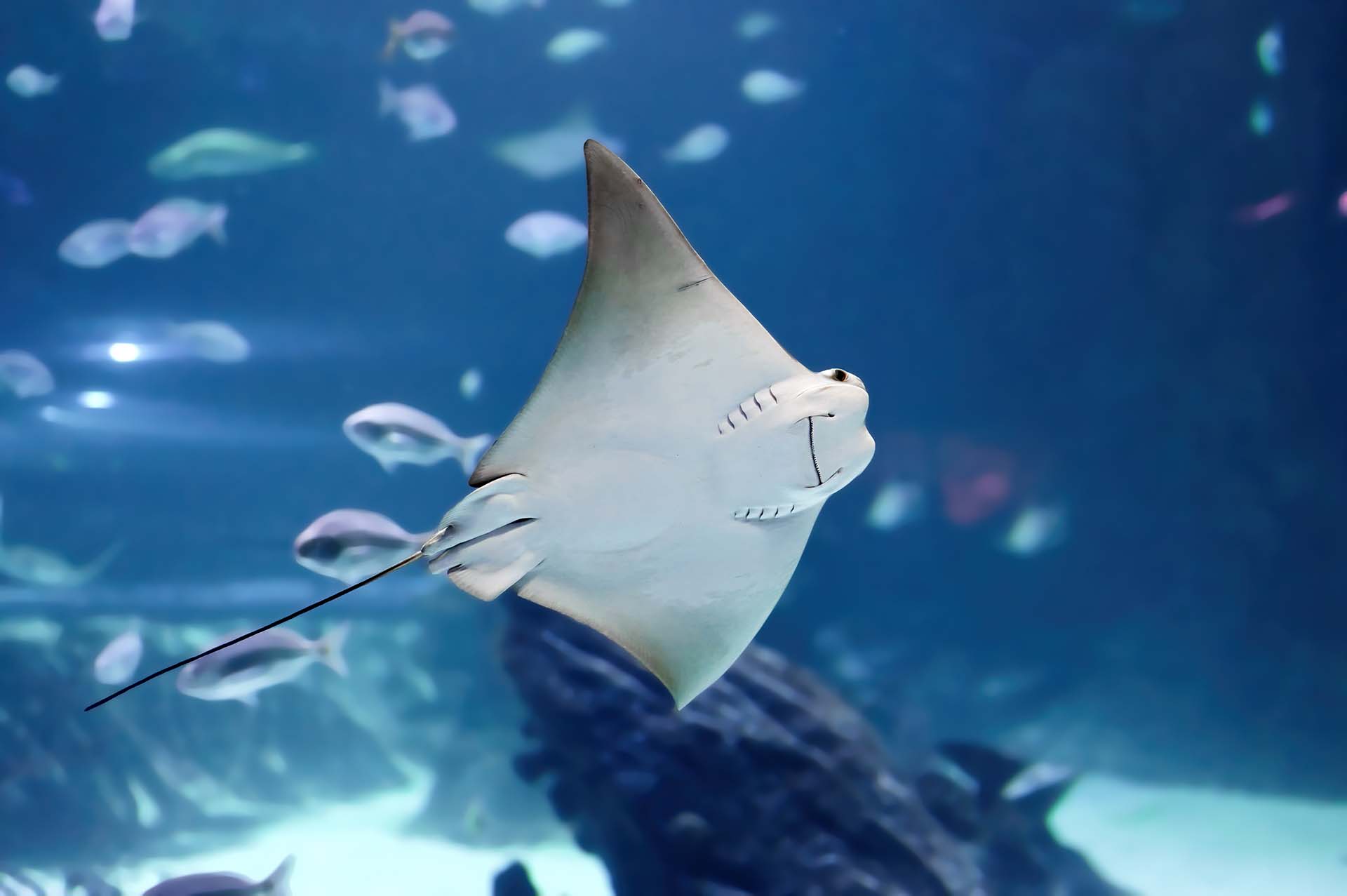
Explore Stingray Anatomy and Its Unique Features
Exploring marine biology and the life beneath the surface where elegance meets functionality, you’ll surely cross paths with stingrays. Their flat bodies, long tails, and expansive pectoral fins paint a portrait of unique adaptation to the fluid landscapes they call home. Let’s explore the intricacies of these mesmerizing creatures, diving deep into the details that make stingrays a marvel of marine evolution.
Flat Bodies - Graceful Adaptation to the Ocean Floor
Stingrays, with their distinctively flat bodies, are marvels of underwater engineering. This feature allows them to seamlessly glide along the ocean floor, effortlessly blending with the sandy landscapes that often define their habitats. This evolutionary adaptation serves not only as a camouflage strategy but also as a mechanism for conserving energy, enabling them to navigate the shallows with unparalleled grace.
Long Tails - A Masterstroke of Aquatic Maneuverability
The long tails of stingrays are a testament to their prowess in underwater navigation. These tails, often armed with defensive spines, play a crucial role in steering and propelling the stingray through the water. The combination of their flat bodies and long tails grants them unparalleled agility, making these creatures adept hunters and evaders in the intricate dance of ocean life.
Pectoral Fins - Wings of the Underwater Ballet
The pectoral fins of stingrays are not merely appendages – they are the wings of an underwater ballet. Spanning wide and thin, these fins enable the mesmerizing undulating motions that characterize a stingray’s movement. With a rhythmic wave-like pattern, these fins allow efficient gliding and precise control, contributing to the distinctive beauty of these creatures as they navigate the liquid realms they inhabit.
Gills and the Art of Underwater Breathing as Part of Aquatic Adaptations
To truly understand stingrays, we must delve into the art of underwater breathing. Like their fish counterparts, stingrays possess gills and intricate respiratory structures that extract life-sustaining oxygen from the water. This adaptation aligns them with the classic characteristics of fish, emphasizing their status as aquatic marvels perfectly tuned to the rhythm of the ocean.
Reproduction and Life Cycle of Stingrays
The underwater world of stingrays is not only a spectacle of grace but also a theater of life’s continuation. Reproduction in stingrays is a complex yet fascinating process, often shaped by the rhythms of their oceanic habitats. Female stingrays typically give birth to live young, a strategy known as ovoviviparity. During mating rituals, male stingrays use specialized claspers to transfer sperm to the females, initiating the miracle of life beneath the waves.
Once fertilized, the embryos develop within the safety of the mother’s body until they are ready to emerge into the world. The birth of stingray pups is a testament to the resilience of life in the oceans, as these miniature replicas of their parents navigate the waters with instinctive finesse.
The life cycle of a stingray is marked by stages of growth and adaptation, each phase intricately connected to the surrounding environment. As they mature, young stingrays transform, adapting to the challenges of their aquatic world.
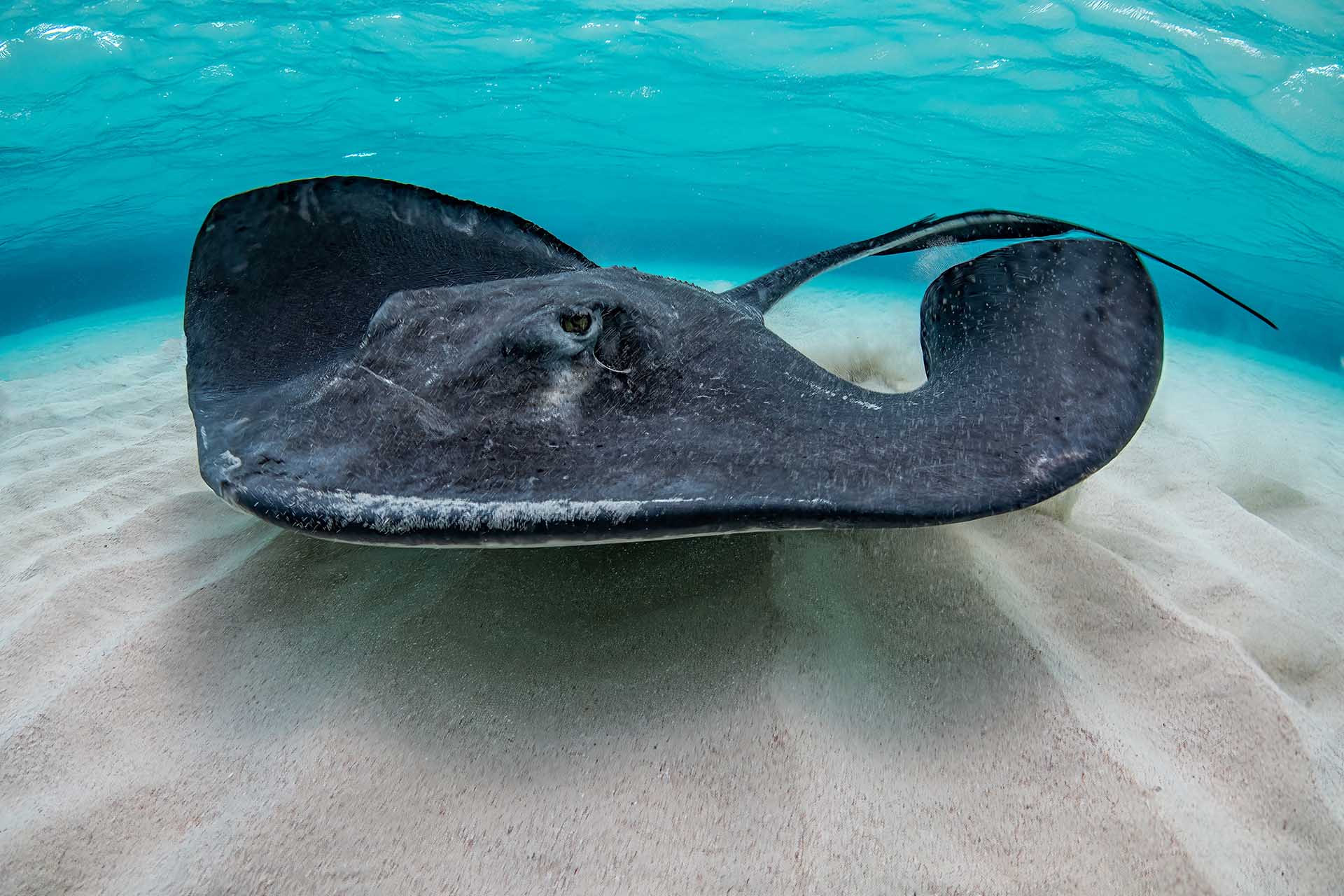
Stingrays vs. Other Fish – A Comparison
In the aquatic arena, stingrays and traditional fish species, such as bass, showcase a captivating interplay of differences and similarities. Let’s delve into a comparative exploration, focusing on key aspects that set these underwater marvels apart.
| Aspect | Stingrays | Bass |
|---|---|---|
| Swimming style | Graceful, undulating motions propelled by pectoral fins. | Swift, oscillating movements driven by dorsal and anal fins |
| Body shape | Distinctively flat bodies, perfect for gliding along the ocean floor | Streamlined and fusiform bodies, ideal for swift navigation in open water |
| Habitat adaptation | Often found in sandy or muddy habitats, utilizing flat bodies for camouflage | Varies by species, commonly inhabiting freshwater lakes, rivers, and estuaries |
| Feeding habits | Bottom-feeders, using ventral mouths to forage for prey | Opportunistic predators, employ various hunting techniques to catch smaller fish and insects |
| Defensive mechanisms | Some species possess a venomous stinger for defense against predators | Rely on agility and speed to evade predators |
The Stingray Behavior and Defense Mechanisms
At the heart of their protection arsenal is the venomous stinger, located near the base of the tail. Contrary to common misconceptions, stingrays are not aggressive creatures. Rather, their stings are deployed as a last resort for self-defense.
When threatened or inadvertently stepped on, the stingray’s tail may whip upward, delivering a puncturing jab. The venom, produced in glands along the tail, serves to deter potential predators. While the pain from a sting can be intense, especially due to the serrated edges of the spine, the venom itself is not usually fatal to humans.

Stingrays in the Ecosystem – Guardians of Oceanic Harmony
Stingrays, with their seemingly effortless glides and enigmatic presence, play pivotal roles in maintaining the delicate balance of marine ecosystems. Positioned as both predators and prey, stingrays contribute significantly to the intricate web of oceanic food chains. They forage along the ocean floor, feasting on crustaceans, mollusks, and small fish, regulating the populations of these lower trophic level organisms.
Beyond their role as consumers, stingrays act as indicators of environmental health. Their presence or absence can serve as a barometer for the overall well-being of the underwater world. Changes in their population dynamics may signal shifts in environmental conditions, offering valuable insights into the state of oceanic ecosystems.
By studying the behaviors and distribution of stingrays, scientists gain a deeper understanding of the health and resilience of marine environments. Thus, these graceful beings emerge not only as inhabitants of the ocean but as guardians, silently reflecting the harmony and vitality of the ecosystems they call home.

Human Interaction With Stingrays
The relationship between humans and stingrays is a complex dance, shaped by both the allure of fishing and the imperative of conservation. Fishing for stingrays, whether intentional or incidental, has become a cultural practice in some regions, driven by both subsistence needs and recreational pursuits. However, the increased demand for their meat, skin, and even the pet trade has raised concerns about the sustainability of these practices.
Concurrently, the marine conservation status of stingrays has become a focal point for marine researchers and environmental advocates. Many stingray species face threats from habitat loss, climate change, and overfishing. Efforts to balance human interests and the preservation of these captivating creatures involve implementing responsible fishing practices and establishing marine protected areas. Above all, it’s important to raise awareness about the importance of stingrays in maintaining the ecological equilibrium of our oceans.
The Impact of Human Activities on Stingray Populations
Human activities loom large over stingray populations, imperiling the delicate balance they maintain in marine ecosystems. Overfishing, driven by demand for various stingray parts, poses a significant threat, compounded by habitat degradation and climate change. Incidental captures and coastal development further jeopardize their existence. Acknowledging our role in their fate, urgent conservation measures, sustainable fishing practices, and habitat protection are vital to preserving these graceful creatures and safeguarding the intricate web of marine life they contribute to.

Discovering the Symphony of Stingrays – Ambassadors of Marine Harmony
In unraveling the enigma surrounding stingrays, we’ve explored the depths of their unique existence within the vast tapestry of marine life. From their captivating anatomy and crucial roles in ecosystems to the nuances of their interactions with humans, stingrays emerge not just as fish but as ambassadors of the ocean’s intricate harmony.
The flat bodies, long tails, and graceful movements underscore their unique place in the aquatic world. As we conclude this underwater journey, let the dance of stingrays inspire further exploration and appreciation of the wonders beneath the waves. Dive deeper into the oceans, for there is always more to discover and cherish in the diverse, captivating realm of marine life.



